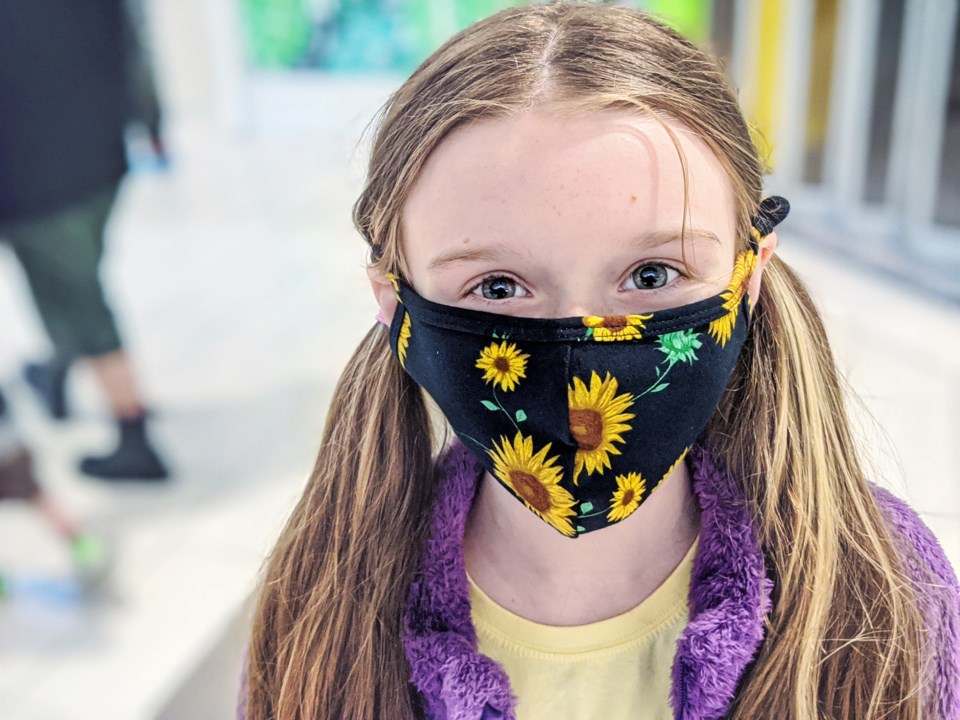2022 marked a dramatic shift in the way we live with COVID-19, as public health officials moved from a series of restrictions and mandates in early January to a more hands-off approach by December, as the virus continues to kill over 100 people monthly.
When British Columbians rang in the new year last January, the highly transmissible Omicron variant loomed over the province as cases rose through the 2021 holiday break only to explode when everyone returned to work and school.
In January, British Columbians — freshly granted the right to five paid sick days on New Year's Day — had to use vaccine cards; masks were mandated in many public spaces, including schools; gyms were closed; offices were shuttered; court hearings were only online; U.S. border crossings required the ArriveCan app; visitors were restricted in long-term care homes; and the sick were asked to isolate.
By mid-month, known cases of COVID-19 surpassed 30,000 and hospitalizations doubled in a matter of weeks, rising even further, to 646.
If you didn’t have COVID-19, you knew someone close to you that did, it seemed.
Meanwhile, the vaccine booster program faced delays and provincial health officer Dr. Bonnie Henry was criticized for not including congestion and a runny nose on an official list of COVID-19 symptoms for students, so as to allow them to go back to school after five days.
COVID-19 hospitalizations in B.C. topped 1,000 for first time and the testing system collapsed under such extreme demand, leading public health officials to turn to sewer samples.
There were close to 200 COVID-19 deaths reported in January. Meanwhile, the Ministry of Health began distributing rapid test kits only after the Omicron wave peaked.
By February, the wave had subsided and on Feb. 17 certain public health orders were lifted, with restaurants, bars and nightclubs again able to operate at full, unrestricted capacity — as if the worst of the pandemic was behind B.C.
Additionally, employers were allowed to require employees to return to the office.
But the latest surge left health-care workers in greater distress. A telephone survey of more than 800 members of the Hospital Employees’ Union found 34.4 per cent likely to leave health care in the next two years.
In March, transit and school mask mandates were lifted; in April, the vaccine passport was eliminated.
But the virus continued to lurk.
Spring brought lower hospital cases and occupied ICU beds for COVID-19 fell to under 40. Nevertheless, B.C. passed the 3,000 death mark as COVID-19 updates went weekly, from daily. Death tallies continue to undergo changes and controversy with second infections not counted.
The Ministry of Health reveals it spent $626 million on the province’s COVID-19 mass-vaccination campaign during the fiscal year ended March 31.
June brought forth more liberal travel policies as the U.S. lifted negative COVID-19 test requirements and Canada paused random testing for visitors. The ArriveCan app for entry into the U.S. would be eliminated by Oct. 1.
Summer brought sustained COVID-19 case loads; of the 406 COVID-19 patients in B.C. hospitals, 30 were in intensive care units, as of July 21.
Ahead of the return to school, Health Canada authorized officials to use the country's first variant-targeting COVID-19 booster shot, one day after the U.S. Food and Drug Administration did the same. B.C. began distributing Moderna's Omicron-targeting COVID-19 vaccine to residents older than 18 years.
A study co-authored by Henry told of how at least 70 to 80 per cent of children and youth in Greater Vancouver and the Fraser Valley have been infected with COVID-19, to date. Noting COVID-19 can cause long-term vascular and neurological effects in children, Safe Schools Coalition B.C. voiced concerns about inadequate school ventilation and lack of mask mandates.
Weeks into the school year, a pediatric health-care crisis began to emerge in B.C. hospitals, spurred by a suite of respiratory viruses (RSV, flu and coronavirus).
In October, Henry dropped all self-isolation rules for COVID-19, resulting in mere recommendations to stay home if you’re feeling unwell. But BC Children’s Hospital emergency wait times routinely soared to over 12 hours. Meanwhile, six children were reported to have died of the flu, which is two more than the four who have died of COVID-19 the entire pandemic.




